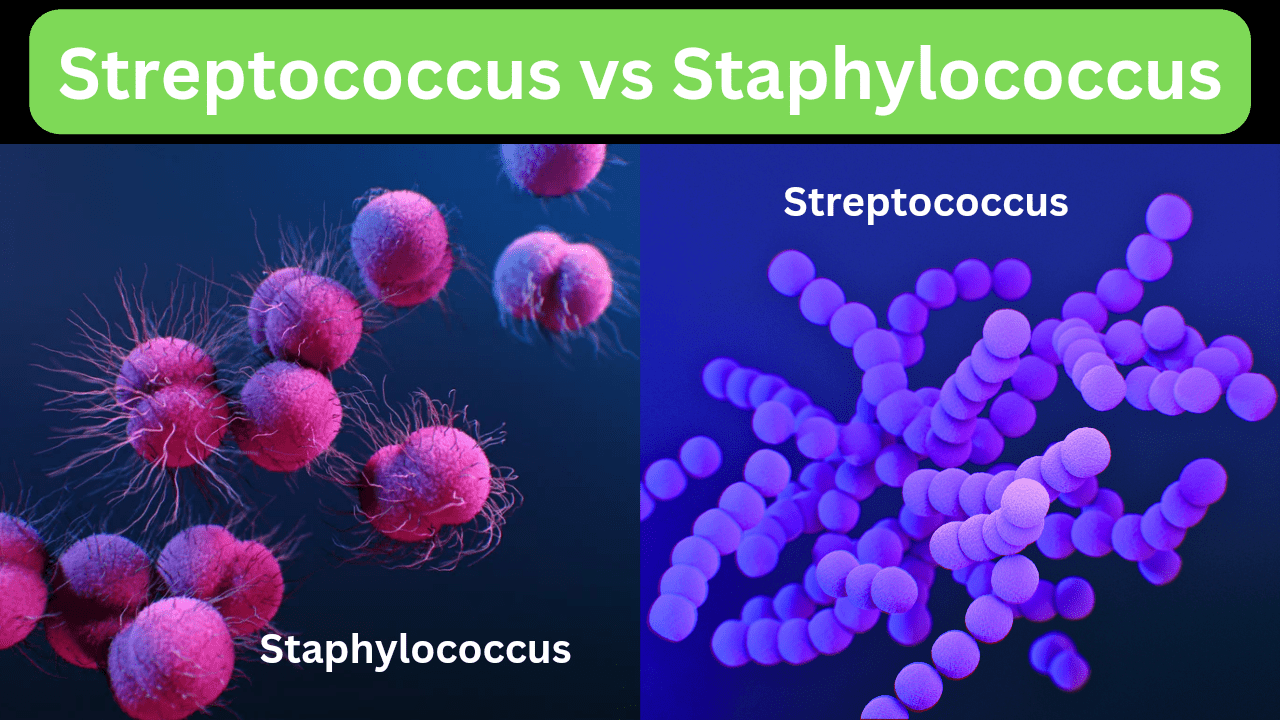Here you will understand about streptococcus vs staphylococcus.
In the world of microbiology, two bacterial genera often steal the spotlight for their medical significance and intriguing characteristics are Streptococcus and Staphylococcus.
These two groups of bacteria, while sharing some similarities, but exhibit distinct features that set them apart.
Here we will explore the key differences and similarities between Streptococcus and Staphylococcus, shedding light on their importance in both health and disease.
Classification
Both Streptococcus and Staphylococcus belong to the phylum Firmicutes, a group of Gram-positive bacteria known for their thick cell walls.
However, they are classified into different families. Streptococcus is a member of the Streptococcaceae family, while Staphylococcus belongs to the Staphylococcaceae family.
Cell Shape and Arrangement
One of the most noticeable distinctions between these bacteria lies in their cell shape and arrangement.
Streptococcus bacteria typically appear as chains of spherical or ovoid cells, resembling a string of pearls. In contrast, Staphylococcus cells are round cocci that arrange themselves in grape-like clusters.
Respiratory vs. Cutaneous Habitats
Streptococcus and Staphylococcus also differ in their preferred habitats within the human body.
Streptococcus species are often found in respiratory tracts and mucous membranes. For instance, Streptococcus pyogenes is responsible for strep throat and skin infections, while Streptococcus pneumoniae is a leading cause of pneumonia and meningitis.
On the other hand, Staphylococcus species primarily inhabit the skin and mucous membranes, with Staphylococcus aureus being a notorious skin pathogen and a common cause of staph infections.
Toxins and Diseases
Both bacteria can produce toxins that contribute to their pathogenicity. Streptococcus pyogenes, also known as Group A Streptococcus (GAS), produces toxins that lead to conditions like scarlet fever and necrotizing fasciitis.
While, Staphylococcus aureus is known for its ability to produce a wide range of toxins, such as staphylococcal enterotoxins responsible for food poisoning, as well as toxins that cause skin and soft tissue infections.
Antibiotic Resistance
Another critical aspect to consider is antibiotic resistance. Staphylococcus, particularly Staphylococcus aureus, has garnered attention due to its ability to develop resistance to multiple antibiotics, including methicillin-resistant Staphylococcus aureus (MRSA).
While Streptococcus can also develop resistance, it is generally considered less resistant compared to Staphylococcus.
Coagulase Test
One of the laboratory tests used to differentiate between these bacteria is the coagulase test.
Staphylococcus aureus is coagulase-positive, meaning it can cause the clotting of blood plasma. In contrast, Streptococcus species are typically coagulase-negative.
